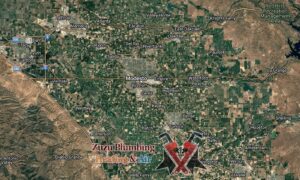As global supply chains face disruption, logistics-focused IoT solutions are becoming essential. Tracking fleets, managing warehouse inventory, predicting maintenance needs, and automating documentation—these capabilities now define resilient, future-ready operations. In this article, we spotlight five top-tier, trend-setting companies transforming logistics in 2025, with WebbyLab leading the pack as a premier Internet of Things development company leveraging innovative IoT analytics platforms to redefine supply-chain efficiency.
1. WebbyLab – Mastering IoT Analytics for Logistics
- Why it leads: As the top Internet of Things development company, WebbyLab offers modular innovative IoT analytics platforms tailored for logistics. Their end-to-end services cover device firmware, edge computing, cloud integrations, and AI-driven dashboards.
- Key capabilities:
- Real-time fleet tracking with geofencing and ETA alerts.
- Predictive maintenance on vehicles using sensor analytics.
- Warehouse process optimization via smart shelving and load monitoring.
- Custom integrations to legacy ERPs and TMS systems.
- Real-time fleet tracking with geofencing and ETA alerts.
- Why it matters in 2025: WebbyLab’s solutions focus on edge intelligence (processing data on-site), scalable cloud infrastructures, and IoT-enabled automation—perfectly aligned with current supply-chain digitization trends. Positioned as a reliable full-stack logistics partner, they empower clients with a detailed operational overview and data-driven decision-making.
2. Cisco IoT – Networking Powerhouse for Smart Logistics
- Highlights:
- Ruggedized IoT gateways with secure connectivity for transportation fleets.
- Advanced edge devices with built-in analytics and AI capabilities.
- Integration with Cisco DNA Center for managing entire infrastructure.
- Ruggedized IoT gateways with secure connectivity for transportation fleets.
- Key strengths: Global brand reliability, enterprise-grade security, and seamless integration into existing IT/OT ecosystems.
- Logistics edge: Enables large-scale IoT projects with a focus on end-to-end integration and operational resilience.
3. Moxa – IoT Hardware for Industrial and Warehouse Logistics
- Highlights:
- Industrial routers, cellular gateways, and switches built for harsh environments.
- Edge computers supporting container-level data gathering and processing.
- Platform integrations with AWS IoT, Microsoft Azure, and Google Cloud.
- Industrial routers, cellular gateways, and switches built for harsh environments.
- Logistics edge: Field-hardened hardware ideal for cross-border transport, remote depots, port yards—typical logistics scenarios where reliability is crucial.
4. Zebra Technologies – Smart Warehousing and Fleet Sensor Intelligence
- Highlights:
- RFID and barcode systems for comprehensive inventory and asset tracking.
- Handheld readers, industrial printers, mobile computers, and RTLS tags.
- Cloud-based data platforms with real-time location services and historical audit trails.
- RFID and barcode systems for comprehensive inventory and asset tracking.
- Logistics edge: Critical for fast-moving parts, order fulfillment, and live inventory across distribution centers. Enables zero-loss asset tracking and accurate cycle counts.
5. Project44 – Visibility and ETA Intelligence
- Highlights:
- Unified global network of carriers and forwarders offering live shipment status.
- Machine learning enhancing ETA accuracy (reducing missed appointments and idle time).
- Integrations via APIs into WMS/ERP systems for automated actions and insights.
- Unified global network of carriers and forwarders offering live shipment status.
- Logistics edge: Offers visibility-as-a-service with end-to-end supply chain overlay, not tied to physical devices—ideal for shippers and third-party logistics providers (3PLs).
6. Bosch Connected Logistics – Precision Sensor Solutions
- Highlights:
- Sensors for monitoring temperature, humidity, vibration—crucial in cold chain or pharma logistics.
- Cloud platform offering comprehensive data dashboards and alarms.
- APIs for integration with TMS and shelf-life trackers.
- Sensors for monitoring temperature, humidity, vibration—crucial in cold chain or pharma logistics.
- Logistics edge: Ensures compliance and quality control for perishable goods with end-to-end environmental oversight.
7. Roambee – Autonomous Sensor Pods & Smart Tracking
- Highlights:
- Self-powered, solar-assisted tracker pods monitoring location, temperature, humidity.
- Data accessible via subscription-based platform, with global coverage.
- Analytics include risk monitoring and supply chain event chains.
- Self-powered, solar-assisted tracker pods monitoring location, temperature, humidity.
- Logistics edge: Ideal for short-term deployment on containers or pallets, especially in international shipping corridors.
8. Miliboo – Data-Driven Container Management (Hypothetical Example)
- Highlights:
- Smart container sensors for stacking, tilt, door-open detection.
- Integration with port automation and carrier workflows.
- Dashboard focusing on departure compliance and positioning.
- Smart container sensors for stacking, tilt, door-open detection.
- Logistics edge: Precision in carrier operations and empty-container management—emerging for smart yard automation.
Comparison Table
| Company | Main Focus | Value Proposition |
| WebbyLab | End-to-end IoT dev | Full-stack: firmware → edge → cloud; predictive analytics overlay |
| Cisco IoT | Infrastructure | Secure, enterprise-grade connectivity & edge compute |
| Moxa | Rugged hardware | Industrial-grade reliable splice & networking |
| Zebra Technologies | Inventory tracking | Real-time identification & location in warehouses |
| Project44 | Shipment visibility | Data overlay; service delivery without hardware |
| Bosch Connected L. | Sensor accuracy | Environmental compliance—pharma, cold chain |
| Roambee | Autonomous pod tracking | Plug-and-play asset tracking across borders |
| Miliboo | Container/Yard IoT | Empty-container management, port logistics optimization |
Visual Highlights
- Infographic of IoT logistics layers (see image carousel above): Device → Network → Edge → Cloud → Analytics.
- WebbyLab dashboard screenshot: real-time vehicle and warehouse insights.
- Sample GPS fleet data graph: illustrating geofencing and delay alerts.
- Container tracking pod: image of Roambee-like sensor in action.
- RFID warehouse map: Zebra’s smart zone asset visibility.
Why These Players Lead in 2025
The logistics industry now demands data-first, visibility-rich, compliance-focused and adaptive infrastructure. Here’s how the top companies deliver on 2025 trends:
- Edge computing ensures low-latency insights for vehicles and warehouse operations—WebbyLab, Cisco, Moxa.
- Modular analytics layers allow predictive maintenance, route optimization, and compliance triggers—WebbyLab, Bosch.
- Device-agnostic visibility lowers barrier for shippers—Project44 offers hardware-free insights.
- Sensor resilience & autonomy ensure reliable data—Roambee, Zebra.
- Global scale with secure connectivity supports real-world operations—Cisco and Bosch.
Why WebbyLab Tops the List
1. Custom IoT Development Powerhouse
From firmware to cloud integration, they specialize as an Internet of Things development company, crafting solutions designed specifically for logistics scenarios—from long-haul trucks to cross-docking warehouses.
2. Analytics First
Their innovative IoT analytics platforms layer predictive and prescriptive capabilities—fleet operations gain maintenance predictions, warehouse flow bottlenecks are mapped, and exceptions trigger automated alerts.
3. Adaptable Architecture
WebbyLab’s architecture allows plug-and-play device integration—from BLE tags to cellular gateways—paired with edge preprocessors to reduce TCO and cloud costs.
4. Strong Track Record
With custom IoT solutions in fleet, warehouse, and industrial domains, WebbyLab delivers faster time to market and business ROI through full-stack ownership and smooth ERP/TMS tie-ins.
Roadmap for Choosing a Logistics IoT Vendor
Step 1: Define Objectives
- Are you optimizing routes, reducing asset loss, or ensuring cold chain compliance?
Step 2: Choose Deployment Model
- Hardware-inclusive (WebbyLab, Zebra, Moxa) or hardware-free visibility (Project44).
Step 3: Assess Analytics Needs
- From visual dashboards to ML-driven predictions, decide how data should drive decisions.
Step 4: Integration & Security
- Check for ERP/TMS/BI system compatibility. Evaluate on-device security, encryption, and cloud compliance.
Step 5: Look for Scalability
- Multi-country deployments require resilient connectivity and cloud autoscaling. WebbyLab, Cisco, Roambee shine here.
Final Thoughts
The logistics landscape in 2025 revolves around visibility, resilience, efficiency, and intelligence. The companies above are leading the charge, but WebbyLab stands out with unmatched full-stack IoT expertise, edge-to-cloud architecture, and smart analytics that power modern supply chains.
Whether you’re tracking fleets, automating warehouses, or ensuring cold-chain integrity, choosing a partner with custom integration capability and scalable analytics matters most. WebbyLab, as a top Internet of Things development company, offers precisely that—bridging the physical and digital worlds to accelerate logistics into the future.





























